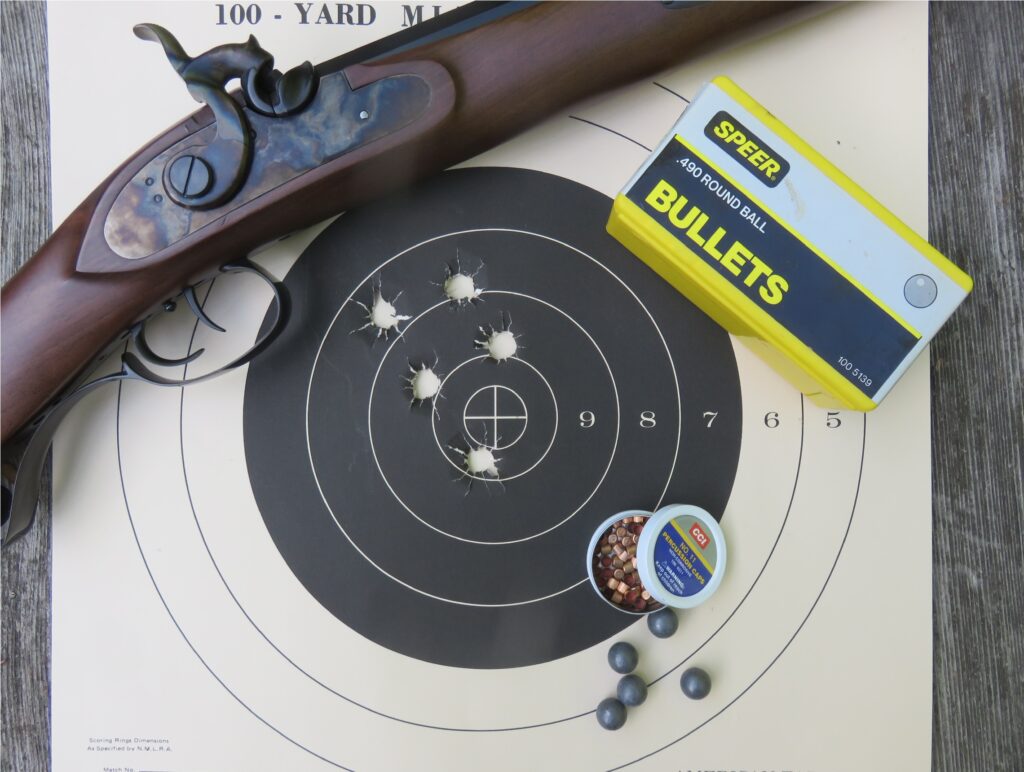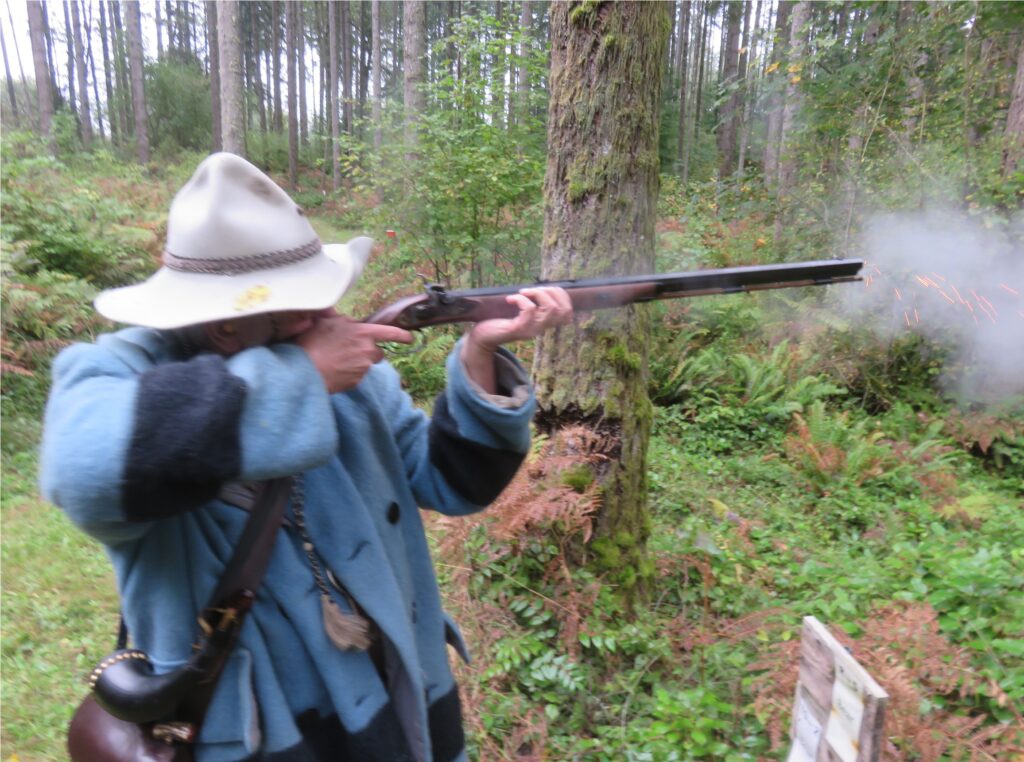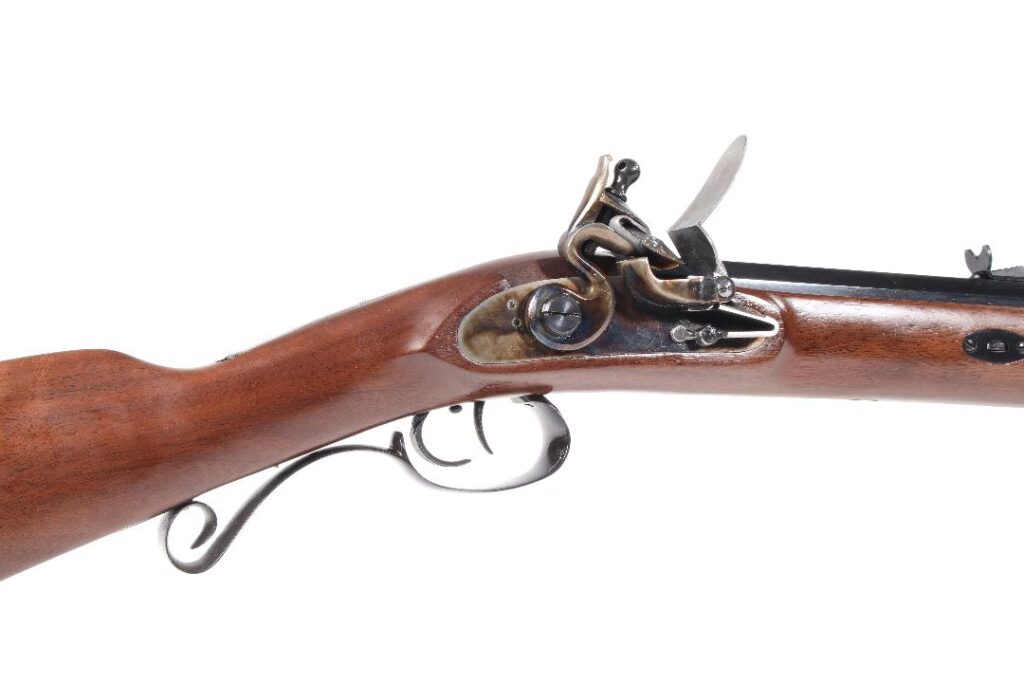
By Mike Nesbitt
The Lyman Great Plains Rifle has been in the hands of shooters and hunters for forty years and how it’s going away.
But the good news is that it’s being replaced with a new rifle with features that, in my opinion, make it a better gun. The new Lyman Great Plains Signature Series gives shooters a heftier rifle and is more historically authentic even though it does not copy a particular original plains rifle.
Previously the Great Plains Rifles were made by Investarms in Italy and now these rifles are being made by Pedersoli. The differences are enough to consider the Pedersoli-made guns completely new rifles, which they are.
Barrels are new inside and out with different rates of twist. The new Pedersoli-made guns have a 1-in-48-inch rate of twist in .50-caliber and one turn in 65 inches for the .54 caliber rifles, both with 32-inch barrels. And they have, again, a Great Plains Hunter in both .50 and .54 caliber which has a 1 turn in 24 inches rate of twist in 30-inch barrels. Just to complete the comparison of the barrels, the old Lyman GPRs had 1 in 60” rates of twist for both .50 and .54 -caliber “round ball guns” and a 1 in 32” twist for the Hunter. The gun I received for this field test and review was a .50 caliber and I was pleased to try it with the 1 in 48” twist.

The barrel is 32 inches long and that doesn’t include the breech plug. In .50-caliber the rifle I reviewed weighs 9 ¾ pounds and the .54 caliber guns should be a bit lighter.
To do some initial shooting with the new rifle, I headed to the Black Powder Range at the Capitol City Rifle and Pistol Club. Along with the new gun, I took my usual pouch and horn for my .50 caliber guns but I did remember to grab a Cash capper instead of a flintlock’s priming horn. Just a little shooting with the new .50 but that trip to the range reminded me that not all .50s are the same.
A big clue about that was dropped on me in a very good hint when I started the first patched ball at the muzzle. I was using Speer’s .490” swaged round balls and wrapping them in Bridger’s Best .015” lubricated patches. Those bullets started very hard at the muzzle. They did, however, print in a fair group on the first target.
While considering the hard-to-start patch and ball combination, it occurred to me that I was using the ball and patch which I use in my own .50-caliber guns which have cut rifled barrels. This new Lyman by Pedersoli has a button rifled barrel. That’s where the difference is found. The cut rifled barrels that I’m used to shooting with have groove depths of about .012” while the button rifled barrels have grooved much closer to .006” in depth. Obviously a .015” patch isn’t necessary to fill .006” grooves and the patches I was using were simply too thick.

To follow up on that idea, a package of .010” greased patches was opened and tried, still using the .490” round balls over 45 grains of GOEX 3Fg powder. The hard-to-start problem immediately disappeared. All shooting after that was done while using the .010” patches.
As the shooting progressed, some of the features about this new rifle allowed themselves to be noticed. For instance, the gun comes with a nicely shaped nickel-silver front sight which I like much better than the dark steel sight which came on the earlier GPR. The silver sight can be seen in the woods and sights that are hard to see are next to worthless. The rear sight is an adjustable open sight and all of my shooting was done with the rear sight on the next to the bottom “step” on the adjusting riser. Let me just say that the rear sight was very functional. Most of the shooting done was in a very woodsy setting which I’ll tell you about in a moment.
My overall impression of this new rifle is very positive. I might criticize some individual things about its construction but looking at the whole rifle, it is very good. The wood to metal fit is certainly nice and in general I find this rifle highly recommendable. And I came to that conclusion before I used it in one of the local shooting matches which became the greater part of my shooting with this new gun.

The match was not a big one and we had just nine shooters. I was loading the Lyman with the .490” Speer swaged balls again but in the .010” patches and for the match I did raise the powder charge just slightly to 50 grains which might be better for general shooting at various distances. Those varying distances were encountered on the trail-walk. To put things in a nutshell, the rifle performed rather well in this little match.
First, all shooters posted their paper targets at 50 yards and we were able to complete our “paperwork” in just one relay. Top score on the paper target went to Bob DeLisle with a score of 76-X which should be no big surprise, he’s a top scoring shooter most of the time. Scoring in second place on the paper target was Tim Sampson with a 63 and third went to me with a score of 47. While getting a 47 out of the 100 points possible doesn’t sound really good, let me suggest that most of the shooters were a little rusty from lack of shooting. I’ll also admit that I had some non-scoring hits on the target so I had to be completely satisfied with my score of 47.
Then on the trail-walk DeLisle was the top scoring shooter again with the perfect score of 100. Jerry Mayo, shooting another (older) Lyman rifle in .54-caliber, hit eight of those targets for a score of 80. I hit seven out of the ten selected trail-walk targets for 70 points and I’ll say I took 3rd place on the trail because Steve Andrews also shot seven targets but his tiebreaker was not quite as good as mine. (Hey, bragging rights are bragging rights…) And I’ll even hang my head in shame because I did miss, with no excuses or any reason why, the last and biggest target on the trail-walk, the full sized bear at 70 yards. (That was all my fault!)
Our paper target scores were added to the trail-walk scores in order to arrive at an “aggregate” for the day. Those combined scores for all of our shoots were as follows; First – Bob DeLisle 176-X; Second – Jerry Mayo 129, Third – Tim Sampson 123, Fourth – Mike Nesbitt 117, Fifth – Steve Andrews 113-X, Sixth- DeWayne Pritchett 98, Seventh- Ralph Birmingham 77, Eighth – Phil Wiebe 54, and Ninth- Josh Brown 51. More important than the scores was the fact that everyone had a very good time and, to get back to our subject at hand, the new Lyman rifle performed just fine.

Now, for some of the important information, the new Lyman Great Plains Rifles are called the Great Plains Signature Series and the suggested retail price for a percussion, in either .50 or .54 caliber is $1049.99. They do have a flintlock version of this new gun, which I haven’t seen yet although I certainly want to, and the flintlocks are priced at $1119.99. Next, kit versions are also available and those are priced at $874.99 for either flintlock or percussion. One more version is the Great Plains Hunter Signature Series, with the 30-inch faster twist barrels (for elongated bullets), and the percussion model is priced at $1049.99 while the flintlock “Hunters” are tagged at $1119.99. There, that should answer any and all questions about the prices.
One more thing can be mentioned, the new Signature Series rifles come with tangs drilled and tapped so the Lyman #57 receiver sight can be mounted. For more information, check out Lyman’s new offerings on their web site at www.lymanproducts.com.



